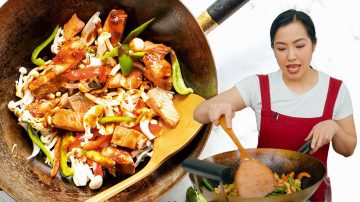Understanding Different Types of Rice in Asian Cooking
Recipe Overview
Overview
In this informative video, the host dives deep into the world of rice, a staple in many Asian cuisines. The discussion begins with sushi rice, known for its short, sticky grains that are perfect for sushi and other dishes where the rice needs to hold together. The host emphasizes that while many people refer to sushi rice as sticky rice, true sticky rice is actually a different variety known as glutinous rice, which is even stickier and chewier.
Next, the video explores jasmine rice, a long-grain variety that is aromatic and soft, making it a favorite in Thai cooking. The host explains how jasmine rice strikes a balance between stickiness and fluffiness, making it versatile for various dishes. In contrast, basmati rice is introduced as a long, slender grain that remains separate when cooked, ideal for Indian and Middle Eastern cuisines.
The video also touches on the importance of washing rice to remove excess starch, which can affect the final texture. The host provides practical tips on cooking rice, including the right water-to-rice ratios for different types. This guide is not just about cooking rice; it’s about understanding the cultural significance and culinary applications of each variety, ensuring that viewers can make informed choices in their cooking endeavors.
Recipe Details
Steps & Tips
Introduce the three types of rice: sushi rice, jasmine rice, and basmati rice.
Tip: Look for the word 'homy' when shopping for fragrant Thai rice.
Tip: Stick with reputable brands when buying jasmine rice to ensure quality.
Wash the rice to remove loose starch, agitating the grains and pouring off the cloudy water.
Use the back of a sift to hold the rice back and add the appropriate amount of water.
Bring the water to a simmer, keeping an eye on it to prevent boiling over.
Tip: Use glass lids to monitor water without opening the pot.
Turn the heat down to low and let the rice cook until all the water is absorbed.
Use a spatula to check if the rice is done by pushing it aside to see if the bottom is dry.
Let the rice sit for 10 minutes after cooking before serving.
Tip: Let rice sit for 10 minutes after cooking to absorb lingering moisture.
Adjust cooking time based on the type of rice and the cooker used.
Tip: If using a new brand of rice, be prepared for different water requirements.
Tip: Try Tha Jasmine brown rice for a softer, better-tasting option.
Tip: Choose rice that matches the cuisine for the best results.
Ingredients
No ingredients available.
Skill Level
Frequently asked questions
Below you will find answers to the most common questions about this recipe.
Got a Recipe Question? Ask Away!
Interesting Tidbits
- •Sushi rice is sticky and chewy, making it ideal for sushi and kimbab.
- •Basmati rice is long and fluffy, commonly used in Indian and Middle Eastern dishes.
- •Jasmine rice has a floral aroma and is softer than basmati, making it suitable for Thai cuisine.
- •Brown rice retains its bran, making it more fibrous and chewy compared to white rice.
- •The water-to-rice ratio varies by rice type, affecting the cooking process.










